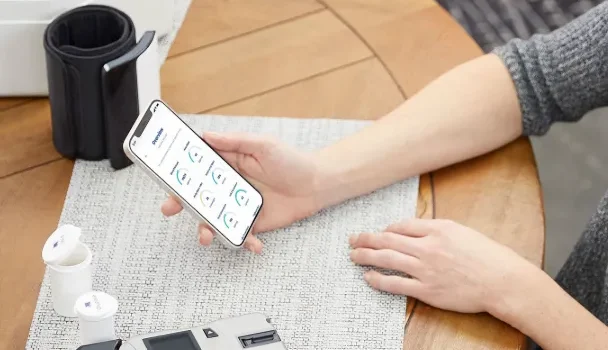
Maintaining healthy cholesterol levels is key to protecting your heart and overall cardiovascular health. High cholesterol can lead to increased risk for heart disease and stroke, making regular cholesterol checks important. While traditional screenings typically require a visit to your healthcare provider, at-home cholesterol testing kits now offer a more convenient and accessible way to monitor your cholesterol levels from the comfort of home. These kits are user-friendly and deliver fast results.
Understanding Your Cholesterol Readings
Before using an at-home cholesterol kit, it’s helpful to understand what your cholesterol levels mean. A typical cholesterol test will measure your total cholesterol, LDL (bad cholesterol), HDL (good cholesterol), and triglycerides. Here are the ideal target levels for each:
- Total cholesterol: Below 200 mg/dL
- LDL cholesterol: Less than 100 mg/dL
- HDL cholesterol: 60 mg/dL or higher
- Triglycerides: Less than 150 mg/dL
Keeping your cholesterol within these recommended ranges can help reduce the risk of plaque buildup in your arteries, heart attacks, and strokes. If your results show elevated levels, you may need to adjust your lifestyle or start a treatment plan.
Types of At-Home Cholesterol Testing Kits
There are a few different types of cholesterol testing kits available for home use, each offering different levels of convenience and accuracy:
Home Test Systems
Home test systems provide a simple way to check your cholesterol at home. These systems include a meter and testing supplies. After pricking your finger with a lancet to collect a blood sample, you insert a test strip into the meter to get your results in just a few minutes.
Popular FDA-approved systems, such as CardioChek, Curo L5, and PT Program, can test total cholesterol, LDL, HDL, and triglycerides, providing a complete lipid profile.
Mail-In Test Kits
With mail-in cholesterol test kits, you collect a blood sample at home and then send it to a certified lab for analysis. These kits come with all the necessary supplies, including collection tubes, labels, and return packaging. Once you’ve collected your sample, you send it off and receive your results online or by phone.
Companies like LetsGetChecked and Everlywell offer reliable mail-in test kits that make cholesterol testing easy and convenient.
Test Strips
Test strips are a more basic option for home testing. These strips change color after you apply a drop of blood, allowing you to match the color to a guide and determine your total cholesterol level. While these strips are simple to use, they don’t provide a full breakdown of LDL, HDL, and triglycerides, but they’re useful for a quick total cholesterol check.
How Accurate Are At-Home Cholesterol Tests?
The accuracy of at-home cholesterol tests is a common concern, especially when compared to lab testing. According to FDA guidelines, approved at-home tests must meet the same accuracy standards as lab-based tests when used correctly. This means that, in general, at-home tests are reliable.
However, accuracy depends on how well you follow the instructions. Improper blood sample collection, using expired materials, or failing to fast (if required) can affect the results.
Tips for Getting the Best Results
To ensure you get the most accurate results from your at-home cholesterol test, follow these tips:
- Use an FDA-approved test kit
- Check the expiration date of your test materials
- Follow the sample collection instructions exactly
- Fast for 12 hours before testing, if recommended
- Retest if you get unexpected or inconsistent results
Using At-Home Cholesterol Results
While at-home cholesterol tests are a great way to monitor your cholesterol levels, they should not be the sole basis for making health decisions. Consider your at-home results as a starting point, and be sure to follow up with your doctor for a comprehensive evaluation.
Schedule a visit with your physician to discuss your cholesterol numbers and overall cardiovascular health. Your doctor can help interpret your results in the context of your full medical history and determine whether you need further testing or treatment.
Tracking Changes Over Time
For those already managing high cholesterol, at-home tests can be helpful for tracking progress. After starting a cholesterol-lowering plan through diet, exercise, or medication, periodic at-home testing lets you monitor how your levels change.
Discuss with your healthcare provider how often you should use these tests to check if your management plan is working effectively and to ensure your cholesterol stays within a healthy range.












